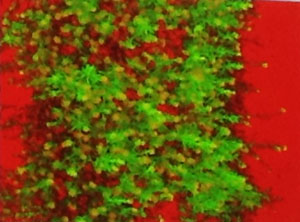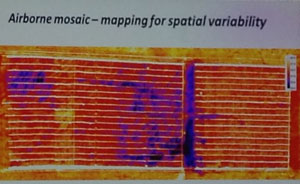 In many parts of the world, the rate of increase on grain yields is slowing. Researchers in places like Australia are racing the clock to find solutions before there is an actual drop in yield.
In many parts of the world, the rate of increase on grain yields is slowing. Researchers in places like Australia are racing the clock to find solutions before there is an actual drop in yield.
Jose Jimenez-Berni, Research Scientist at the Agriculture Flagship at CSIRO, Australia’s national science agency, spoke at the 14th International Rapeseed Congress in Saskatoon, Saskatchewan, on developing methods to understand plant phenotypes (their observable traits) to help increase yields.
“In the post-genomics era, phenotype is king!” says Jimenez-Berni. “We have excellent tools for mapping genomes, but there is a bottleneck when it comes to phenotypes. We need another boom in yields, and we believe the answer is understanding the dynamic interaction between environment and traits.”
Fundamentally, plants convert light into carbohydrates that will be allocated into biomass and yield. During the green revolution the effort was how to improve the partition of biomass and grain (also known as harvest index) through the development of semi-dwarf varieties that produced more grains on smaller plants. However, there is a limit on increasing harvest index, so the new approach is to increase the capacity of crops for turning light into biomass and ultimately yield while maintaining current harvest index.
At two Australian research stations, the Plant Accelerator in Adelaide, and the High Resolution Plant Phenomics Centre (HRPPC) in Canberra, researchers are studying aspects that contribute to light conversion, such as the process of photosynthesis on an individual plant basis, and the canopy architecture of fields.
At the scale of a single plant, the research facility uses 3D modeling from colour and infrared imaging to track plant development, such as the growth of new leaves. Other plant imaging is looking at non-destructive methods of studying root structures.
But there is only so much knowledge one can glean from an individual plant. Crops do not grow in labs environments; they grow in a canopy, and they interact with soil and climate.
“Traits are dynamic. When we look at the phenotype as an expression of the genotype, we need to understand that the environment is dynamic and changes the phenotype,” says Jimenez-Berni
At a field scale, Jimenez-Berni’s team is looking at multiple imaging techniques that can answer questions about canopy structure, temperature and biochemistry to give a complete picture of how the crop behaves in real time. LiDAR imaging can show canopy structure; high resolution RGB imaging produces stereo reconstruction; Thermal Infrared camera’s can record canopy temperatures; and a hypersectral line scanner and full range spectrometer offer information about canopy biochemistry.
“We used to measure canopy features manually,” he said. “But now we can attach the imaging equipment to an airplane, and measure the full field trial in a few seconds. In the case of canopy temperature we went from explaining only 10% of the genetic variability with the manual measurements to 70% with the airborne imagery. This is a quantum leap on how we can do phenotyping in the field with very dynamic traits.”
With the LiDAR imaging, the result is a 3D reconstruction of the canopy. Measurements can be compared to the Harvest Index (the weight of a harvested product as a percentage of the total weight of a c to determine which adaptations show good results in certain growing conditions. The tools are affordable, non-destructive and allow growth rates over time. “You can study the plants right in the field,” says Jimenez-Berni.
Collecting valuable data is only part of the challenge, however. “We’re talking gigabytes of information for each plant,” says Jimenez-Berni. “We need to relate the information on the phenotype in a way that can be cross-referenced with the genotype.” His team is developing a web interface in the processing pipeline that is easy to use by non-computing experts.
Constant monitoring of several fields and genotypes as they develop over multiple seasons means data that will eventually characterize both the plant and its reaction to its environment. By gathering this information into a large database, they will be able to evaluate traits and predict outcomes based on genes, soil and climate types. This is what Jimenez-Berni defined as “in-silico breeding.” That information will directly affect future breeding decisions and speed up the development of new varieties with higher yields or other interesting traits.


Photos supplied by Jose Jimenez-Berni.
Noelle Chorney is a Saskatoon-based freelance writer.